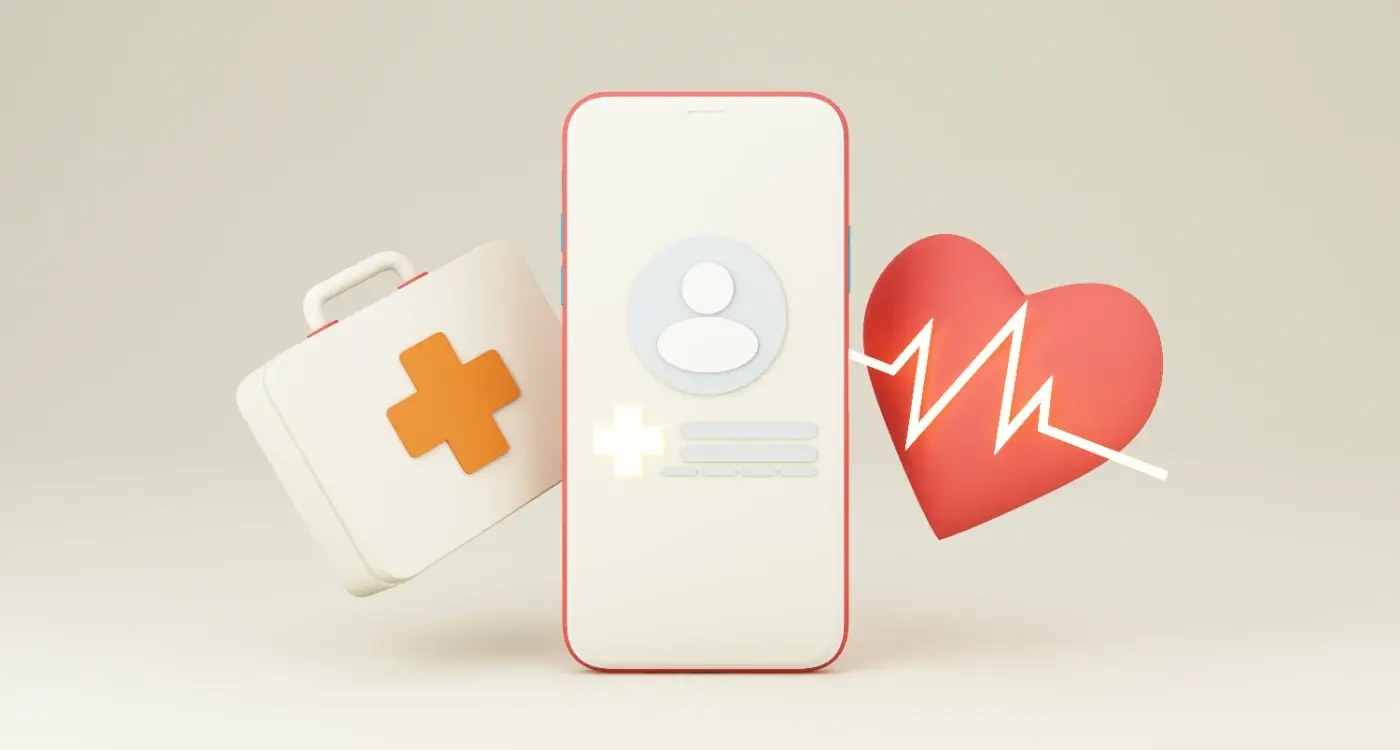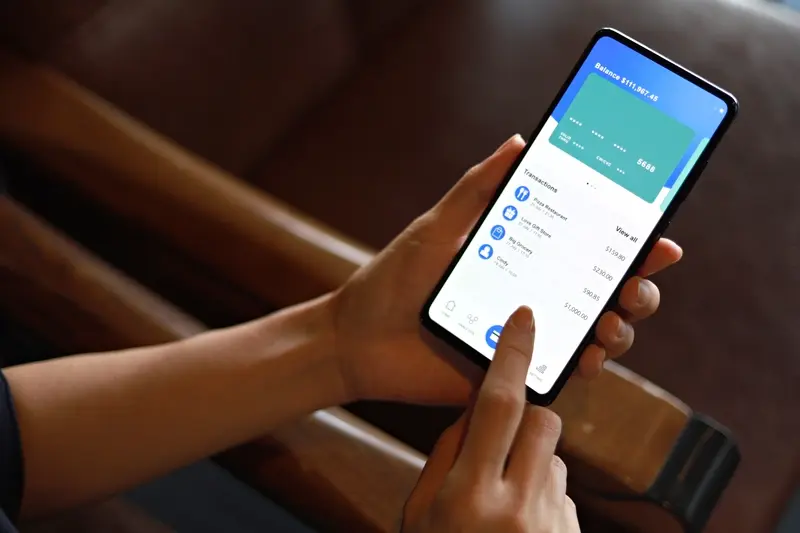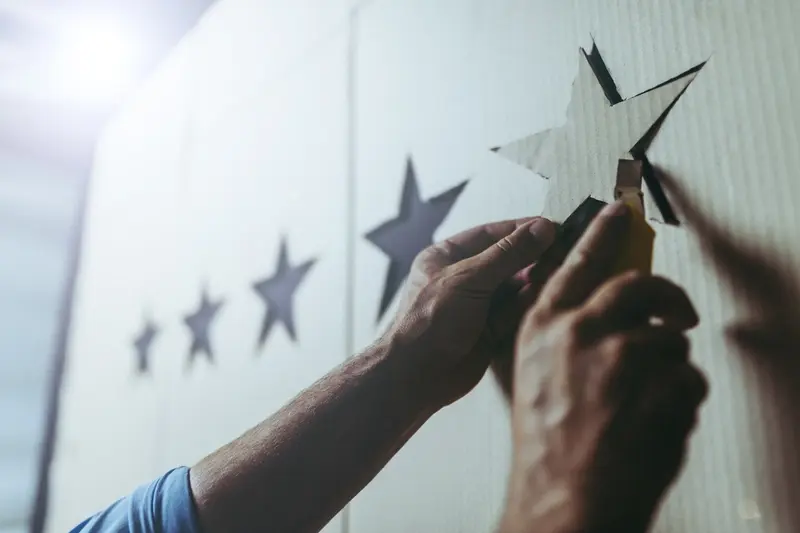How Do I Explain Blockchain Features To My App Users?
A popular fitness app recently added a feature where users could earn digital tokens for completing workouts. Sounds straightforward, right? Wrong. Within days, the support team was flooded with confused messages. Users couldn't understand what these tokens were, how they worked, or why they should care. The blockchain-powered reward system—designed to motivate and engage—was doing the complete opposite.
This scenario plays out more often than you'd think. Blockchain technology offers incredible possibilities for mobile apps, from secure transactions to unique digital ownership. But here's the problem: most people still don't understand what blockchain actually is, let alone how it benefits them in their daily app experience.
As app developers and designers, we face a real challenge. We want to build apps that use cutting-edge technology, but we also need our users to actually understand and enjoy using them. Poor user communication around blockchain features can kill even the best app ideas before they get off the ground.
The biggest mistake app developers make isn't technical—it's assuming users will naturally understand blockchain benefits without proper explanation
The good news? You don't need a computer science degree to explain blockchain features clearly. What you need is a solid understanding of your users and some practical strategies for breaking down complex concepts into simple, relatable terms. This guide will walk you through exactly how to do that, from understanding the basics yourself to testing your explanations with real users. We'll cover the fears and concerns your users might have, and show you how to address them head-on with clear, ongoing communication that actually works.
Understanding What Blockchain Actually Is
Right, let's get straight to it—blockchain is basically a digital record book that nobody can change once something's written in it. Think of it like a school register where every student's name gets written down, but once it's there, you can't rub it out or change it. The difference is that this digital record book isn't kept in one place; it's copied and stored on thousands of computers around the world.
Here's where it gets interesting (and where most people's eyes start glazing over). Every time someone wants to add a new entry to this record book, all those computers have to agree that it's legitimate. It's like having thousands of witnesses checking that what you're writing is true before it gets permanently recorded.
The Basic Building Blocks
Blockchain is made up of several key parts that work together:
- Blocks: containers that hold information about transactions
- Chain: the connection between blocks that keeps them in order
- Network: all the computers that store copies of the blockchain
- Consensus: the agreement process that verifies new information
Each block contains a group of transactions and a special code that links it to the previous block—that's what creates the "chain" part. When someone tries to add a new block, the network checks it against all the existing copies to make sure everything matches up.
The reason blockchain matters for your app users is transparency and security. Because the information is spread across so many computers and can't be altered, it creates a system that's very difficult to hack or manipulate. That's why people get excited about using it for everything from digital payments to storing important records.
Why Users Find Blockchain Confusing
Right, let's be honest here—blockchain is confusing. And I'm not just talking about your average mobile app user; I mean even tech-savvy people struggle with it sometimes. After years of working on apps that use blockchain features, I've seen the same puzzled expressions countless times when we try to explain what's happening behind the scenes.
The biggest problem is that blockchain doesn't work like anything most people are familiar with. When you send a text message or post a photo, there's usually one company handling everything—Apple, Google, Facebook. Simple. But blockchain spreads things across hundreds or thousands of computers, and there's no single company in charge. That's already a mental leap for most users.
The Language Problem
Then there's the vocabulary. Words like "decentralised," "consensus," and "immutable" sound like they belong in a science textbook, not in your mobile app. When users see these terms in your user communication, their brains often just switch off. They don't want a computer science lesson; they want to know what your app actually does for them.
Fear of the Unknown
There's also this underlying fear factor. Users have heard blockchain mentioned alongside cryptocurrency crashes and scams in the news. So when they see it in your app, red flags start waving. They're thinking about losing money or having their data stolen—not about the cool features you've built.
Start with what users already understand rather than jumping straight into blockchain terminology. Show them the benefit first, then gradually introduce how blockchain makes it possible.
The good news? Once you break down these barriers and explain blockchain in plain English, users actually get quite excited about the benefits. They just need you to meet them where they are first.
Breaking Down Complex Terms Into Simple Words
The blockchain world loves its jargon—and I mean really loves it. We've got terms like "decentralisation," "immutable ledgers," "consensus mechanisms," and "cryptographic hashing" floating around everywhere. No wonder your users run for the hills! The secret to explaining blockchain features isn't dumbing things down; it's translating technical language into words people actually use in their daily lives.
Start with the basics. Instead of saying "decentralised network," try "shared system with no single owner." Rather than "immutable records," use "information that can't be changed once it's saved." The word "wallet" already works well—everyone knows what a wallet does, so you're halfway there. When you talk about "transactions," just call them "transfers" or "payments."
Common Blockchain Terms Made Simple
- Smart contracts = Automatic agreements that work by themselves
- Mining = Computers solving puzzles to keep the system running
- Hash = A unique fingerprint for each piece of information
- Private key = Your secret password that proves ownership
- Gas fees = Small charges for using the network
- Nodes = Computers that help store and check information
Here's what I've learned after years of building apps: users don't need to understand every technical detail to use blockchain features effectively. They need to understand what it does for them and why it matters. When you strip away the complex vocabulary, blockchain concepts become much less intimidating. Focus on the benefits—security, ownership, transparency—rather than the technical processes that make these benefits possible.
Test Your Word Choices
Before you settle on your simplified terms, test them with people outside the tech industry. If your grandmother, your neighbour, or your local barista can understand what you're saying, you're on the right track. Remember, clarity beats cleverness every single time.
Using Visual Examples To Show How Blockchain Works
Words can only get you so far when explaining blockchain to your mobile app users. I've learnt this the hard way—you can describe decentralisation and cryptographic hashing until you're blue in the face, but without visual aids, most people will still look at you like you're speaking ancient Greek. The truth is, blockchain is a visual concept at heart, and your user communication strategy should reflect that.
Think of it this way: blockchain is basically a digital ledger that gets copied across many computers. Instead of trying to explain this with paragraphs of text, show your users a simple diagram. Draw boxes representing blocks of information, connect them with lines, then show how this chain exists on multiple devices simultaneously. When one person tries to change something, all the other copies can verify whether that change is legitimate or not.
Making Transactions Crystal Clear
For mobile app developers, showing a transaction in action works brilliantly. Create a step-by-step visual that follows a digital coin or piece of data as it moves from one user to another. Show the verification process happening across the network—multiple computers checking the transaction before it gets approved and added to the chain.
The best explanations don't just tell users what blockchain does; they show exactly how their specific action creates a ripple effect across the entire network
Interactive Elements Work Best
Static images are good, but interactive demonstrations are even better for mobile app user communication. Let users tap through each step of a blockchain process within your app. When they send a payment or verify their identity, show them the journey their data takes—from their device to the network and back again. This hands-on approach helps users understand they're not just using another app; they're participating in something bigger and more secure.
Addressing Common User Fears And Concerns
When people hear "blockchain" they often think about hackers stealing money or complicated technology they can't control. These fears are real and we shouldn't ignore them. Users worry about their personal information, their money, and whether they're making the right choice by using your app.
The biggest fear is usually about security. People have heard scary stories about cryptocurrency being stolen or accounts getting hacked. You need to explain that blockchain is actually more secure than traditional systems—not less secure. Tell them that their information is protected by the same type of security that banks use. Be honest about what information your app stores and what it doesn't store.
Money and Cost Worries
Many users think blockchain features will cost them extra money or that they might lose money somehow. Explain exactly what costs money and what doesn't in your app. If there are fees, tell them upfront. If something is free, make that clear too. Don't hide the costs or users will lose trust in your app quickly.
Fear of Making Mistakes
People worry they'll press the wrong button and mess something up forever. Blockchain transactions can't always be undone, which makes this fear worse. You can help by adding confirmation steps before important actions. Show users exactly what will happen before they confirm anything.
- Explain security features in simple terms
- Be upfront about all costs and fees
- Add confirmation steps for important actions
- Provide clear contact information for support
- Show examples of what other users have done successfully
Most fears come from not understanding how things work. When you explain blockchain features clearly and give users control over their choices, their worries start to disappear. People feel more confident when they know what's happening and why.
Testing Your Explanations With Real Users
After years of developing mobile apps with blockchain features, I've learnt that what makes perfect sense to me doesn't always click with regular users. You might think your explanations are crystal clear, but the only way to know for sure is to test them with actual people. This is where user communication in your mobile app gets put to the real test.
The best approach is to gather a small group of people who match your target users—not your tech-savvy colleagues or your mum who nods politely at everything you say. Show them your app's blockchain explanations and watch how they react. Do they understand immediately, or do they squint at the screen looking confused? Are they asking questions that reveal gaps in your explanations?
Simple Testing Methods
You don't need expensive testing labs or complex equipment. Start with these straightforward approaches that actually work:
- Ask users to explain back what they've just read in their own words
- Watch where people pause or re-read sections
- Note which terms make people frown or ask questions
- Test different versions of the same explanation
- Record how long people spend reading each section
Get people to think out loud while they're reading your explanations. Their instant reactions and questions will show you exactly where your communication breaks down.
What To Do With The Results
When users struggle with certain explanations, don't defend your original text—fix it. If three people ask what "decentralised" means, you need simpler language. If they skip over your blockchain security section, it might be too long or boring. The goal isn't to prove you're right; it's to make your mobile app easier to understand for everyone who uses it.
Keeping Your Communication Clear And Ongoing
Here's the thing about explaining blockchain to your users—it's not a one-time conversation. You can't just throw up a help page and hope for the best. People need ongoing support and clear communication throughout their entire journey with your app.
I've worked on plenty of apps where the team thought they'd done enough by adding a few tooltips during onboarding. Wrong move. Users will have questions weeks or even months after they first start using your blockchain features. They might forget how something works, or they might want to do something more advanced than when they started.
Build Support Into Your App Design
Your app needs to have help built right into it. Not hidden away in some corner where nobody will find it. When someone is about to make a blockchain transaction, put a small help icon right there next to the button. When they're looking at their transaction history, give them quick explanations of what each status means.
Think about where users are most likely to get confused and put your help there. Don't make them hunt for answers.
Different Ways To Keep Communication Going
You've got several options for staying in touch with your users about blockchain features:
- In-app notifications that explain new features or important updates
- Email newsletters with simple tips and explanations
- A knowledge base that grows over time with new questions
- Live chat support for when things get tricky
- Video tutorials that show rather than tell
The key is making sure your communication stays simple and helpful. Don't bombard people with technical updates they won't understand. Keep it relevant to what they're actually trying to do with your app.
Conclusion
Getting blockchain right in your mobile app comes down to one simple truth: your users don't need to be blockchain experts to benefit from it. They just need to understand what it does for them. After working with countless apps over the years, I've seen too many teams get caught up in the technical brilliance of their blockchain implementation whilst completely forgetting about the person who actually has to use it.
The strategies we've covered—breaking down complex terms, using visual examples, addressing fears head-on, and testing your explanations—aren't just nice-to-haves. They're what separate successful blockchain apps from the ones that confuse users into deleting them within minutes. Your user communication strategy can make or break your mobile app, regardless of how impressive your underlying technology might be.
Start with small steps. Pick one blockchain feature and work on explaining it clearly before moving to the next. Test your explanations with real people who aren't developers or blockchain enthusiasts. Watch how they react. Listen to their questions. You'll be surprised how often what seems obvious to you creates confusion for them.
The blockchain space moves fast, but good communication principles don't change. Keep your language simple, your visuals clear, and your explanations focused on benefits rather than technical processes. Most importantly, keep listening to your users. They'll tell you exactly what they need to know—and what they don't. When you get this balance right, blockchain stops being a barrier and starts being the competitive advantage you always intended it to be.
Share this
Subscribe To Our Learning Centre
You May Also Like
These Related Guides

What's The Psychology Of Effective App Pricing Pages?

How Do You Build Trust In A New Financial App?



